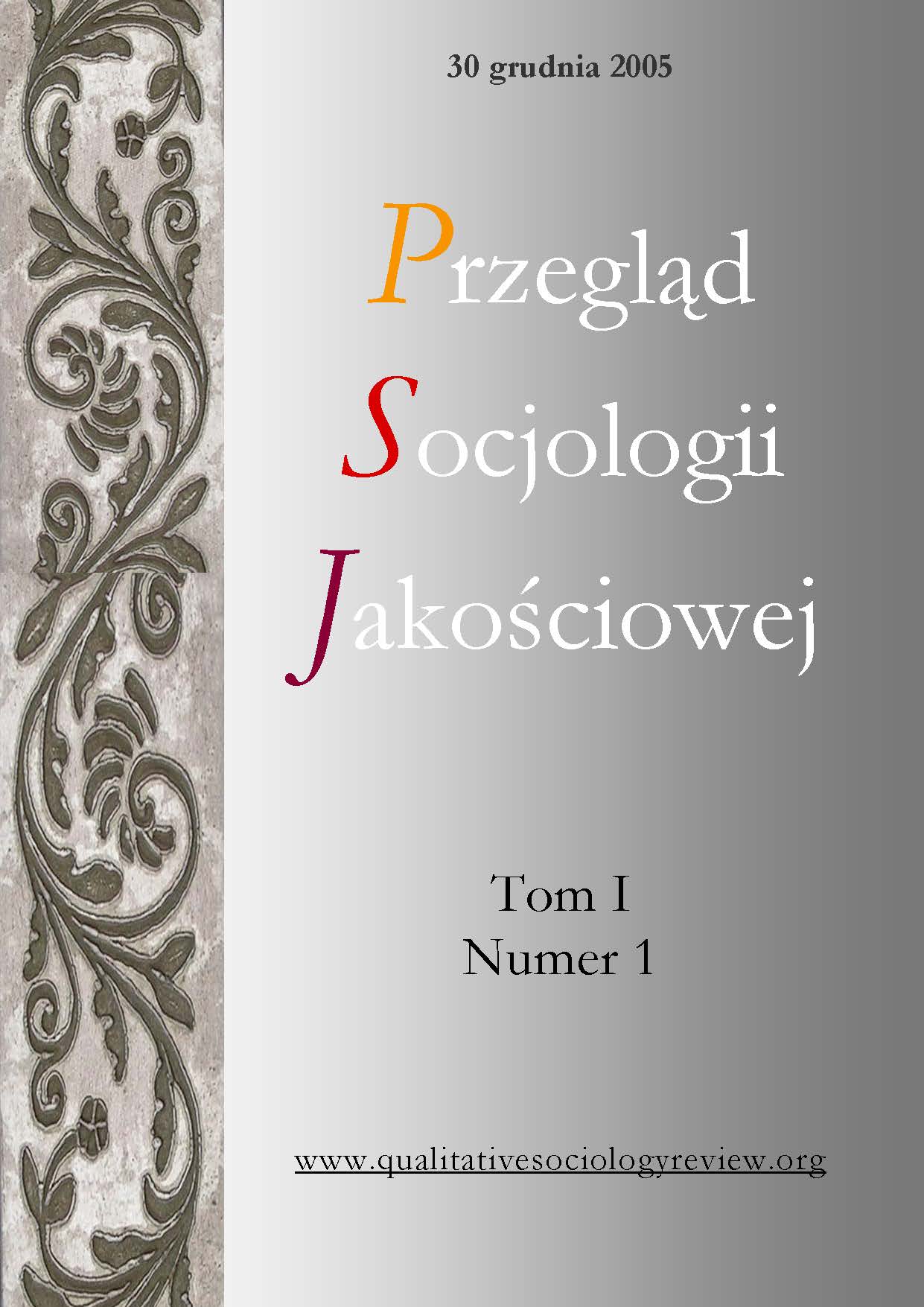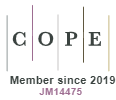Wizualne wyobrażenia. Główne strategie badawcze w socjologii wizualnej a metodologia teorii ugruntowanej
DOI:
https://doi.org/10.18778/1733-8069.1.1.04Słowa kluczowe:
socjologia wizualna, metodologia teorii ugruntowanej, fotografia, pojęcia uczulające, kontekst odkryciaAbstrakt
W artykule omówiono cztery główne strategie badawcze używane w socjologii wizualnej z użyciem fotografii: (1) fotografowanie jako podstawowe działanie badacza plus analiza materiałów wywołanych; (2) fotografie jako materiały zastane, przedstawiające określone obiekty o znaczeniu społecznym; (3) fotografie jako materiały zastane powiązane z materiałami wywołanymi, to jest z narracjami i komentarzami dokonanymi przez respondentów odnośnie pokazywanych im zdjęć; (4) użycie fotografii jako dowodu podpierającego wnioski, lub jako ilustracji dla wniosków uzyskanych z badań, w których głównymi danymi empirycznymi są teksty werbalne lub liczby. W odniesieniu do tych strategii przeanalizowano możliwości wykorzystania obrazu fotograficznego w jakościowej strategii badawczo – analitycznej zwanej metodologią teorii ugruntowanej.
Pobrania
Bibliografia
Bateson, Gregory, Margaret Mead (1942) Balinese Character: A Photographic Analysis. New York, New York Academy of Sciences.
Google Scholar
Becker, Howard S. (1974) “Photography and Sociology.” Studies in the Anthropology of Visual Communication 1:3-26.
Google Scholar
DOI: https://doi.org/10.1525/var.1974.1.1.3
Becker, Howard S. (1982) Art Worlds. Berkeley, Los Angeles, London: University of California Press.
Google Scholar
Becker, Howard S. (1986) Doing Things Together. Evanston: Northwestern University Press.
Google Scholar
Becker, Howard S. (1990) “Art World Revisited.” Sociological Forum 5(3):497-502.
Google Scholar
DOI: https://doi.org/10.1007/BF01115099
Becker, Howard S. (1995) “Backup of Visual Sociology, Documentary Photography, and Photojournalism: It's (Almost) All a Matter of Context.” Visual Sociology 10(1-2):5-14.
Google Scholar
DOI: https://doi.org/10.1080/14725869508583745
Becker, Howard S. (2002) “Studying the New Media.” Qualitative Sociology 25(3):337-343.
Google Scholar
DOI: https://doi.org/10.1023/A:1016029812807
Blumer, Herbert (1954) “What is Wrong with Social Theory?” American Sociological Review 19:3-18.
Google Scholar
DOI: https://doi.org/10.2307/2088165
Blumer, Herbert (1969) Symbolic Interactionism: Perspective and Method. Englewood Cliffs, NJ: Prentice-Hall.
Google Scholar
Brower, Matthew (2005) “Trophy Shots: Early North American Photographs of Nonhuman Animals and the Display of Masculine Prowess.” Society and Animals 13(1):13-32.
Google Scholar
DOI: https://doi.org/10.1163/1568530053966661
Collier, John (1967) Visual Anthropology: Photography as a Research Method. New York: Holt, Rinehart and Winston.
Google Scholar
Darwin, Charles (1872) The expression of the emotions in man and animals. London: John Murray.
Google Scholar
DOI: https://doi.org/10.1037/10001-000
Hall, Edward (2005) Ukryty wymiar. Warszawa: Muza.
Google Scholar
Harper, Douglas (1994) “On the Authority of the Image. Visual Methods at the Crossroads.” S. 403-412 w Handbook of Qualitative Research, (Red.) N. Denzin, Y. Lincoln. London, New Delhi, Thousand Oaks: Sage.
Google Scholar
Harper, Douglas (1997) “Visualizing Structure: Reading Surfaces of Social Life.” Qualitative Sociology 20(1):57-77.
Google Scholar
DOI: https://doi.org/10.1023/A:1024764214854
Holliday, Ruth (2000) “We’ve been framed: visualizing methodology.” The Sociological Review 48(4):503-521.
Google Scholar
DOI: https://doi.org/10.1111/1467-954X.00230
Konecki, Krzysztof (1992) W japońskiej fabryce. Społeczne i kulturowe aspekty pracy i organizacji przedsiębiorstwa. Łódź: Instytut Socjologii UŁ.
Google Scholar
Konecki, Krzysztof (2000) Studia z metodologii badań jakościowych. Teoria ugruntowana. Warszawa: PWN.
Google Scholar
Konecki, Krzysztof (2005) Ludzie i ich zwierzęta. Symboliczno-interakcjonistyczna analiza społecznego świata zwierząt domowych. Warszawa: Scholar.
Google Scholar
Konecki, Krzysztof i Kamila Potomska (2002) “Archetypy i symbole w reklamie.” Marketing i Rynek 7:16-21.
Google Scholar
Koseła, Krzysztof (1989) “Wywiad z interpretacją fotogramów.” S. 167-182 w Poza granicami socjologii ankietowej, (Red.) A. Sułek, A. Wyka. Warszawa: Wyd. Instytutu Socjologii UW.
Google Scholar
Liben Lynn, Lisa Szechter (2002) “A Social Science of the Art: An Emerging Organizational Initiative and an Illustrative Investigation of Photography.” Qualitative Sociology 25(3):385-408.
Google Scholar
DOI: https://doi.org/10.1023/A:1016086030554
Magala, Sławomir (2000) Szkoła widzenia, czyli świat w subiektywie aparatu fotograficznego. Wrocław: Biblioteka Format-u.
Google Scholar
Mead, George, Herbert (1975) Umysł, osobowość, społeczeństwo. Warszawa: PWN.
Google Scholar
Newbury, Darren (1997) “Talking about Practice: photography students, photographic culture and professional identities.” British Journal of Sociology of Education 18(3):421-434.
Google Scholar
DOI: https://doi.org/10.1080/0142569970180307
Olechnicki, Krzysztof (2003) Antropologia obrazu. Fotografia jako metoda, przedmiot i medium nauk społecznych. Warszawa: Oficyna Naukowa.
Google Scholar
Scheff, Thomas (1990) Microsociology. Discource, Emotion, and Social Structure. Chicago: The University Press.
Google Scholar
Suchar, Charles (1997) “Grounding Visual Research In Shooting Scripts.” Qualitative Sociology 20(1):33-55.
Google Scholar
DOI: https://doi.org/10.1023/A:1024712230783
Walker, Andrew L., Moulton Kimball Rosalind (1989) “Photo Albums: Images of Time and Reflections of Self.” Qualitative Sociology 12( 2):155-182.
Google Scholar
DOI: https://doi.org/10.1007/BF00988996
Ziółkowski, Marek (1981) Znaczenie, interakcja, rozumienie. Warszawa: PWN.
Google Scholar
Pobrania
Opublikowane
Jak cytować
Numer
Dział
Licencja

Utwór dostępny jest na licencji Creative Commons Uznanie autorstwa – Użycie niekomercyjne – Bez utworów zależnych 4.0 Międzynarodowe.














